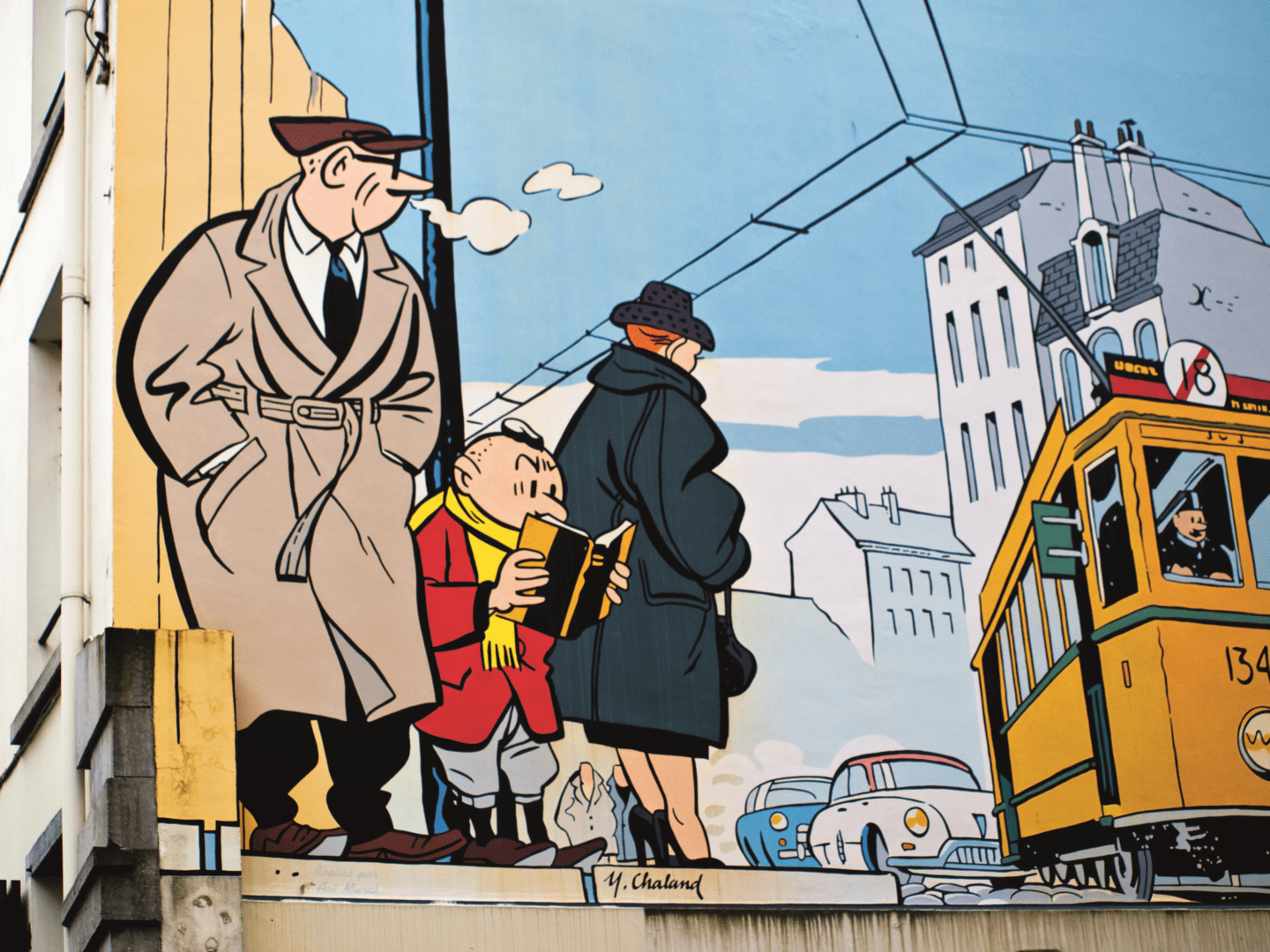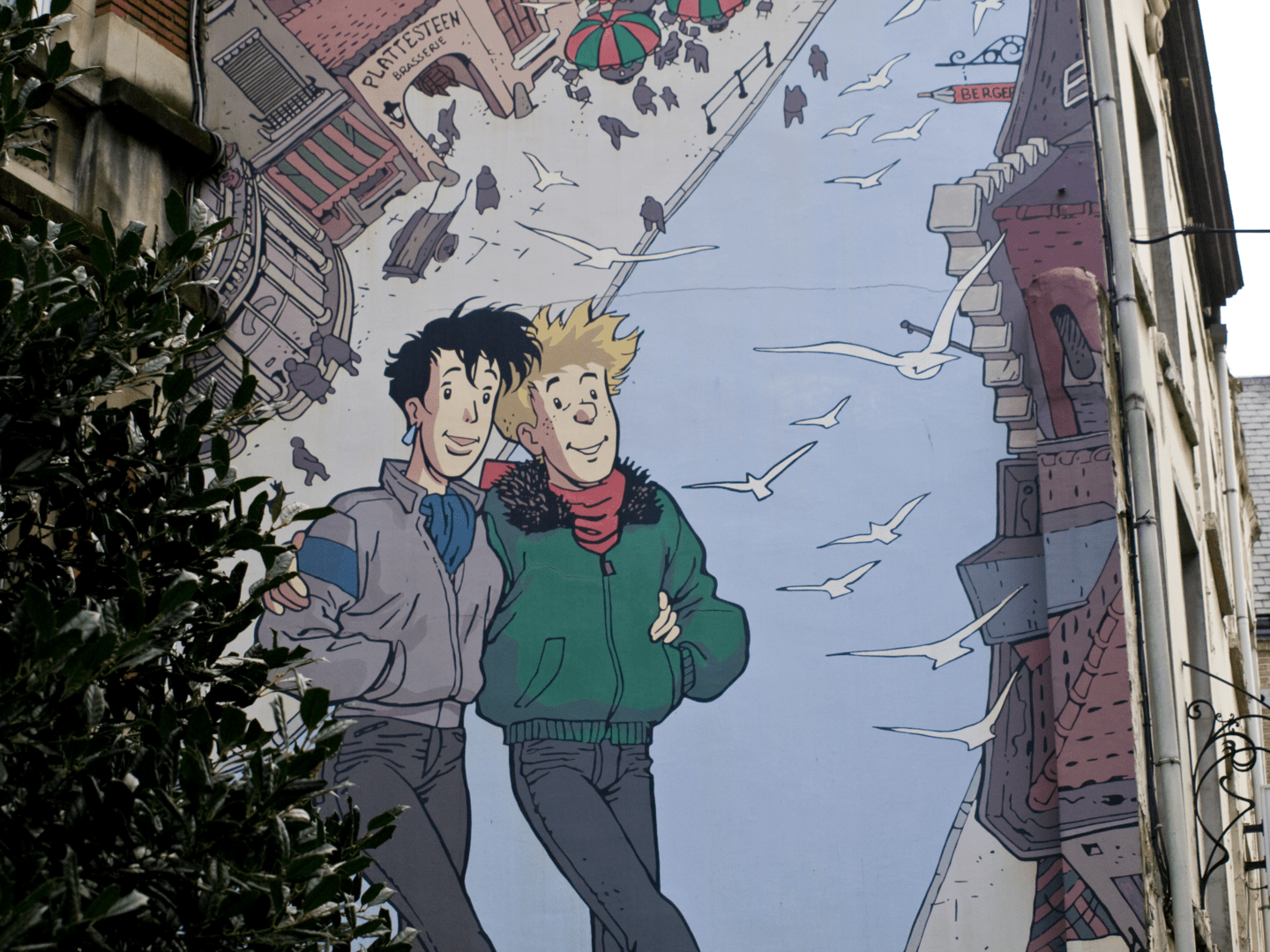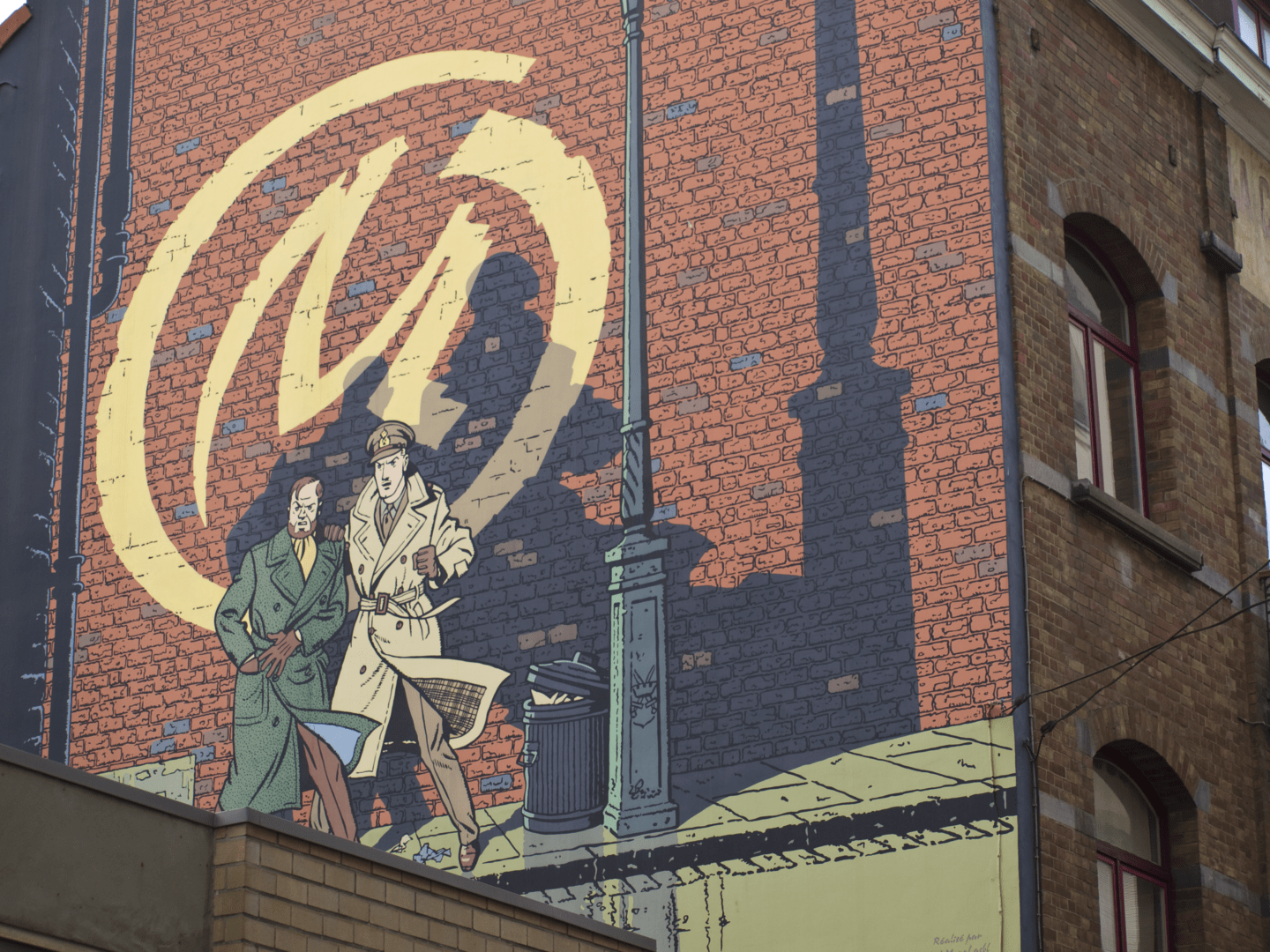Street Comics | Brussels is the capital of Franco-Belgian comics
Search of ‘the ninth art’
Let’s not neglect the opportunity to explore the Art Nouveau architecture of Brussels, but the true aim of our visit to the city is to go in search of ‘the ninth art’: Brussels is the capital of Franco-Belgian comics (or bandes dessinées in French). Here, the cultural significance of these visual narratives is frequently encountered when strolling about: in the many comic book shops that flourish on the city’s shopping streets, in museums such as the Belgian Comic Strip Center, which was opened in 1989 in a building designed by Victor Horta, as well as in the many sculptures and murals scattered around the city.

Tour of comic book facades
If you take the tour of the comic book façades, you will experience the complete social spectrum of the city within a relatively small area. In the city’s predominantly immigrant neighborhood, Lucky Luke and Astérix can be found only a few meters apart on the Rue de la Buanderie, and over a design shop nearby you can spot the guardian angel from Yslaire’s dystopian series ‘From Cloud 99’.
In a painting of the classic cover image of Blake & Mortimer from ‘The Yellow M’ (by Edgar P. Jacobs in the ‘Ligne Claire’ style), the two heroes are facing danger somewhere over the rooftops of a quiet residential area, and on the Quai des Péniches in the harbor area, the Italian cartoonist Hugo Pratt’s sailor Corto Maltese is dreaming on a painted dune. You can meet the mischievous editorial fool Gaston Lagaffe by a parking garage in the Rue de l’Ecuyer, and the never aging reporter Tintin is descending a painted fire escape on the Rue de l’Etuve near the Manneken Pis fountain. The majority of the murals are located in the city center, with few of them a bit further away, and in order to find them all a small guide from the tourist office can be a great help.
The first wall painting was created in 1991 when Frank Pé brought his character of Broussaille and his androgynous girlfriend to the gay district of Brussels; they can be seen strolling on a façade next to the restaurant Le Plattesteen. The painting was renewed in 1999. Forty-nine murals have been made so far, initially with imagery exclusively from Belgian comics, though in 2002 international comic characters entered Brussels with Mister Jean by Dupuy and Berberian. The big stars of Franco-Belgian comics such as Spirou and Tintin were added relatively recently. Unfortunately, a large white smurf has been provisionally removed due to renovation work.

Brussels Comic Book Route
Spirou, the bellhop and later reporter in red bellboy uniform, was designed in 1938 for the still-existing weekly Le Journal de Spirou. When the cartoonist André Franquin took over the journal in 1946, a complete world emerged around Spirou and his friend Fantasio, with narrative comedy and new central characters such as the inventor the Count of Champignac and the villain Zorglub.
The mythical creature of Marsupilami – as depicted on the Avenue Houba de Strooper – and the messenger Gaston Lagaffe – who you can still meet as a sculpture – became very popular, so Franquin eventually developed independent series for each of them. They took up so much of his time that in the sixties he had to give up Spirou. Luckily, other cartoonists took over and continued the series in the distinctive style of the Marcinelle School.
The most famous Belgian is unquestionably Tintin, and he is portrayed with his dog Snowy over the roof of the Le Lombard comic book publishing house at Gare de Midi. The sign lights up at night. The train stations Gare du Midi and Gare du Luxembourg bear frescoes of Tintin’s illustrious creator Georges Remi (1907 – 1983), aka Hergé, whose drawing style, the Ligne Claire, has had a considerable influence on the history of comics. Tintin initially appeared in 1929 as a supplement to the catholic journal Le Vintième Siècle, and in 1946 he got his own eponymous magazine like Spirou. The Franco-Belgian comics have generally been propagated through individual journals, though today the sole survivor of these magazines is the Spirou.

In the stories of Tintin and Spirou, the focus is on the characters. By the seventies, however, the comics developed to become the graphic novel of today, with increasing emphasis on the authors. The monthly journal À Suivre was founded in 1978 in Brussels and featured foreign cartoonists such as Alejandro Jodorowsky from Chile, Jacques Tardi from France and Hugo Pratt from Italy, which were published alongside the local artist François Schuiten until 1997. Together with Benoît Peeters, Schuiten created elaborate volumes about architectural mysteries, and an almost unnoticeable ‘passage’ to their parallel world of Brussels can be found in the Rue Marché au Charbon. And so the tour of comics ends in an imaginary Brussels rather than in the material city.
Visit Brussels and book your stay in the center of Brussels, at MEININGER Hotel Brussel City Center.
Recommended reading:
François Schuiten has illustrated a French Lonely Planet city guide about his hometown. Christine Coste, François Schuiten: ‘Bruxelles: Itinéraires’. Publishers: Casterman / Lonely Planet. Price: € 16.00


